Taktak Project: Promoting Flexible, Transparent Donations to Journalists

In March 2024, a consortium of seven media organisations and a media-focused technology provider launched the Taktak project, with the objective of developing an innovative donation solution, supported by the European Commission. The initiative addresses a fundamental challenge facing modern journalism: the need to identify sustainable revenue sources in the context of evolving consumption patterns and the adverse circumstances faced by freelance journalists. It introduces an innovative approach to donations, whereby readers can decide which organisations to support.
The concept for Taktak was developed by Worldcrunch, a Paris-based digital magazine known for its work with international partners. Lucie Holeček, a design-thinking expert and consultant on the project at Transitions Online, outlines that Worldcrunch’s distinctive collaborative model presented challenges that existing payment platforms were unable to accommodate. As Worldcrunch frequently translates and shares articles with various international media partners, a key challenge emerged in relation to the allocation of donation revenue across contributors. “None of the existing payment solutions worked,” Holeček states, adding that a new approach was needed to ensure funds were distributed fairly among all parties involved.
The Taktak project represents a convergence of three key developments in the journalism sector. Firstly, the initial research phases revealed significant problems faced by journalists, particularly freelancers, in terms of job stability, financial security and stress levels. “We were aware of the difficulties, but not to this extent,” Holeček recalls. Secondly, there is significant untapped potential for joint reporting efforts across languages and borders, which could enhance the scope and reach of journalism. Finally, there is an increasing need to generate direct revenue from the audience.
The Taktak consortium, formed by Worldcrunch, comprises an impressive array of local, national, and international media outlets, which are coming together to explore these opportunities. The consortium includes Mensagem, which provides local news in Lisbon; Pod Tepeto, a media outlet based in Plovdiv, Bulgaria; La Marea, a Spanish publication; and Livy Bereg, a Ukrainian news source. The platform’s geographic diversity and the difference in scale between its members enables it to address the needs of journalists and readers at multiple levels, from the hyper-local to the transnational. The involvement of these media groups also benefits younger journalists, who are facing an increasingly unstable job market and income situation. The consortium’s reach is extended further through the inclusion of WAN-IFRA, the World Association of News Publishers, and Transitions Online, both of which have extensive networks within the journalism community.
Taktak is currently a closed consortium, funded by an investment of €1,376,040 over two years. Eighty percent of this funding, totalling €1,100,832, is provided by the European Commission under the Journalism Partnerships Collaboration call. The remaining 20% is provided by the Taktak partners themselves. “The funding goes toward creating the tool,” said Holeček. She adds that the tool is currently in development and will support various types of content, including articles and podcasts, with options for transparent payment distribution. The tool enables readers to make donations and to see precisely where their contributions are being allocated. This transparency is a key element of the project’s value proposition for donors, as it builds trust.
One of the distinctive features of Taktak is its flexibility. Readers are able to select the total donation amount, while collaborating journalists can choose the ratio of how it is shared. Holeček states that Taktak’s donation model provides an alternative to the fatigue that many readers feel with multiple subscriptions. This new solution offers flexibility, allowing readers to give money without any obligation. They can simply indicate their appreciation for an article and choose to support the publication directly. This approach is particularly beneficial for freelancers, who might otherwise be excluded from revenue-sharing models even when their work is particularly successful.
Taktak’s primary objectives extend beyond the mere creation of a new revenue stream. They also encompass the fostering of collaboration across media, the promotion of diverse voices, the growth of reader engagement, and the encouragement of a more resilient journalism sector. Taktak’s donation-based model encourages journalists and media organisations to commit to quality, in-depth coverage that resonates with readers, with the aim of creating a mutually beneficial relationship. The platform’s secondary objectives include facilitating the sharing of best practices and insights among media outlets, which can ultimately benefit the wider sector.
The tool is currently in the development stage and has been designed with the objective of collecting payments efficiently while distributing them fairly. The tool is essentially a flexible ‘donate’ button that allows readers to decide how much to give to each party involved in the content’s creation. This flexibility addresses a market gap for direct support of journalists, particularly in cases where readers wish to contribute without committing to a full subscription. As Holeček explains, the objective is to make the process “as flexible as possible”, offering financial support to journalists facing financial difficulties who might otherwise go unrewarded.
The first prototype of the Taktak tool is scheduled for release in 2025, following which it will undergo further refinement based on feedback. Holeček emphasises that, while the eventual aim is to roll out Taktak across Europe, the team is mindful of the regional nuances involved. “Every country is specific,” she states, citing differences in consumer attitudes towards paying for news content and in regulatory frameworks. The consortium’s approach to scaling will be strategic and tailored to the specific needs and context of each market.
